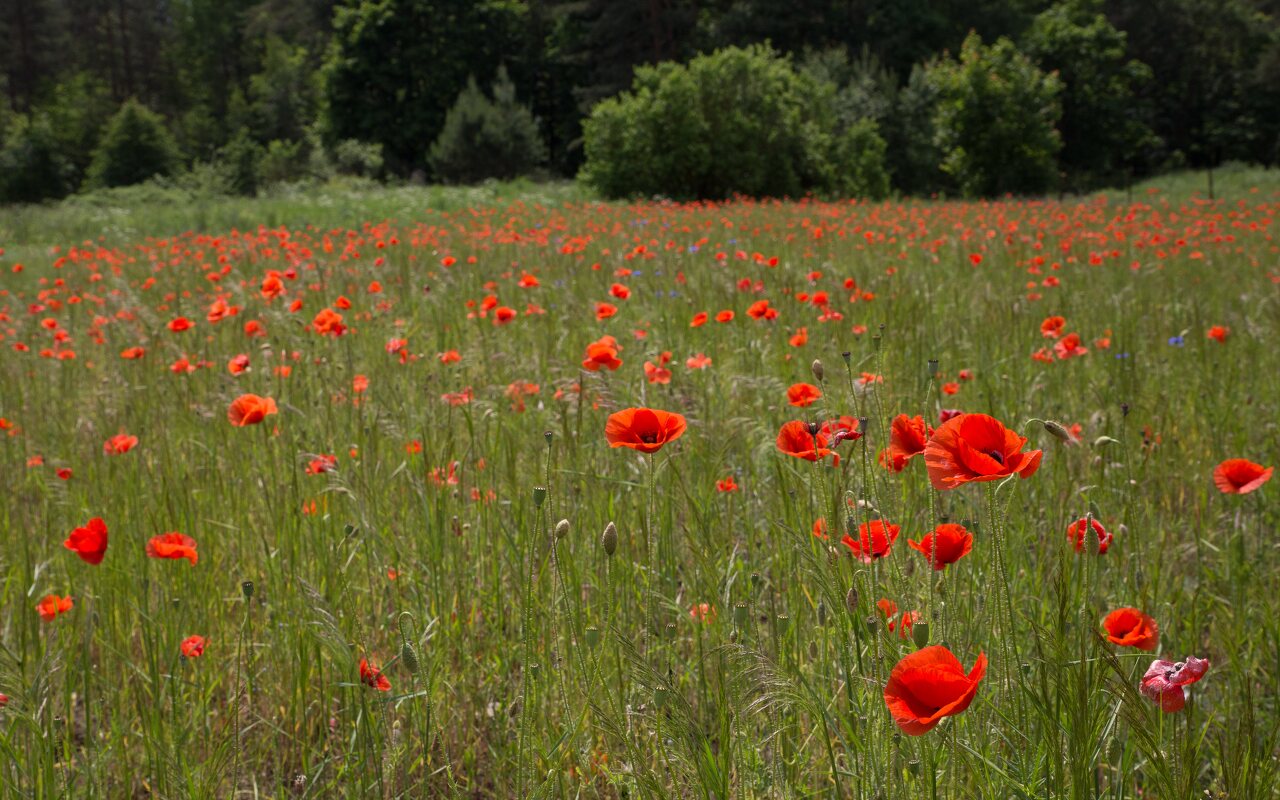
Papaver rhoeas · aguona birulė
- common poppy, Flanders poppy, red poppy
- Klatschmohn, Mohnblume, Klatschrose
- aguona birulė
- zīda magone
- mak polny
- en.wikipedia.org/wiki/Papaver_rhoeas
- luontoportti.com/en/t/1749/common-poppy
- gbif.org/species/2888443
It is native to north Africa and temperate Eurasia and is introduced into temperate areas on all other continents except Antarctica.
Papaver rhoeas is a variable, erect annual, forming a long-lived soil seed bank that can germinate when the soil is disturbed. In the Northern Hemisphere it generally flowers in late spring but if the weather is warm enough other flowers frequently appear at the beginning of autumn. It grows up to about 70 cm in height. The stems hold single flowers, which are large and showy, 5–10 cm across, with four petals that are vivid red, most commonly with a black spot at their base. The petals slightly overlap each other. The flower stem is usually covered with coarse hairs that are held at right angles to the surface, helping to distinguish it from Papaver dubium in which the hairs are more usually appressed (i.e. held close to the stem). The capsules are hairless, obovoid (egg-shaped), less than twice as tall as they are wide, with a stigma at least as wide as the capsule. Like many other species of Papaver, the plant exudes white to yellowish latex when the tissues are broken.
The black seeds are edible, and can be eaten either on their own or as an ingredient in bread.
Lietuvoje labai dažnas augalas. Auga pakelėse, pagrioviuose, javų laukuose (dažnai drauge su rugiagėlėmis), pievose. Vienmetis žolinis iki 90 cm užaugantis augalas. Žiedai raudoni, žydi per visą vasarą. Vaisius – dėžutė. Aguonų sėklos nuo seno vartojamos Senojo Pasaulio medicinoje. Virtuvėje – maisto pagardinimui.
‥
0 comments
Add a comment
Comments